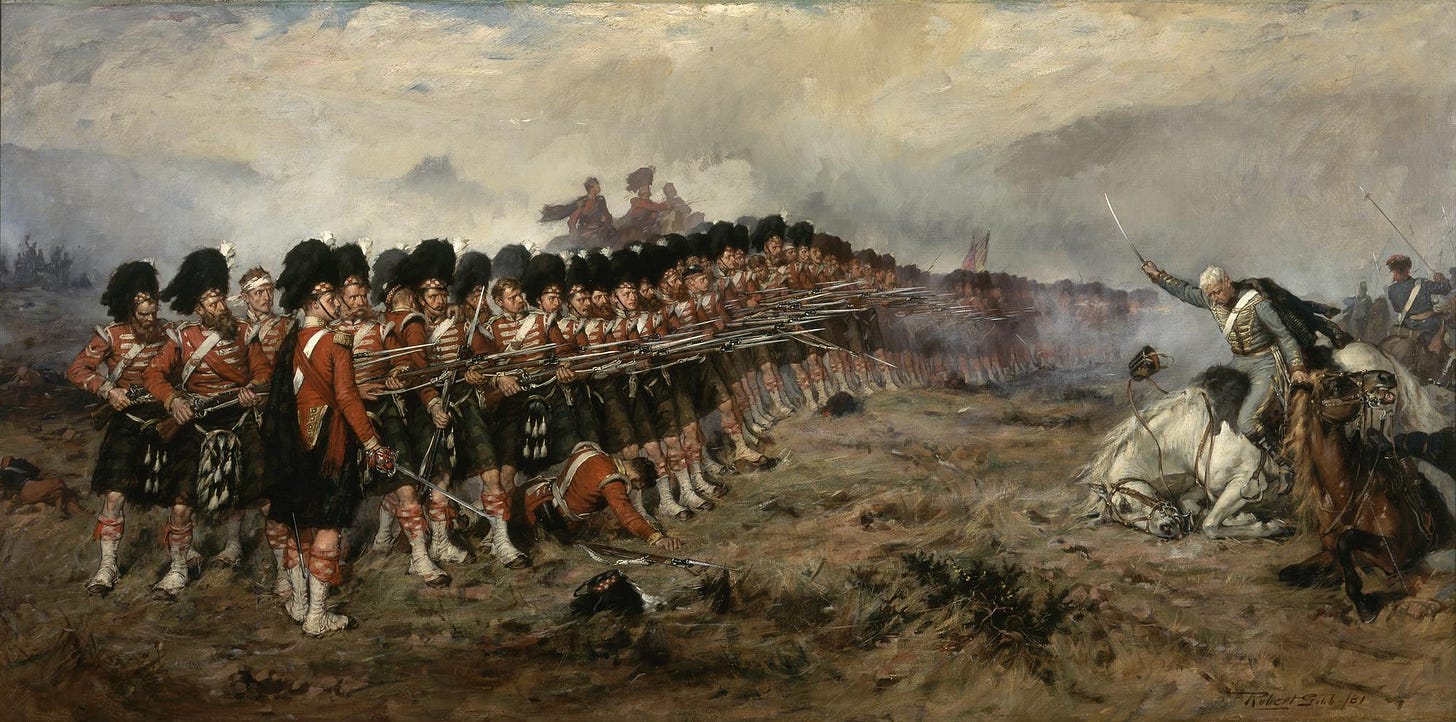Freedom’s Firewall
Why Europe’s defense revival matters to America.

Europe’s rearmament is a strategic imperative for America, driven by threat and opportunity. The threat is obvious: if Europe doesn’t rearm, it will be easy prey for a revanchist Russia, or else sap American resources that could be put to better use in other theaters. The opportunity is less obvious, but just as meaningful: if Europe rearms, it will mean deterrence and peace, but also a surge in defense investment, industrial power, and transatlantic cooperation that would benefit Americans for decades.
Europe’s security environment is the worst it has been in decades. Russia is spending $125 billion on defense this year—its highest budget since the Cold War—while its war economy runs at full tilt. And Russia is not Europe’s only threat. China has declared economic war on European industry, flooding the market with subsidized goods and keeping Moscow’s war machine alive with a constant flow of machine tools, microelectronics, and drones. Meanwhile, Iran is arming the Houthi proxies that have made the Red Sea virtually impassable, disrupting Europe’s trade routes to Asia and destabilizing global supply chains. These are not distant risks. They are daily realities.
The trouble is that Europe’s ability to respond is constrained by deep structural weaknesses. Military innovation has stagnated. Procurement systems are slow, fragmented, and politically biased toward national champions. Once the cradle of global industry, Europe’s commercial sector now lags behind the U.S. in nearly every measure of productivity and innovation. From 2019–2024, Europe’s industrial labor productivity grew at just 0.9% annually; in the U.S., it grew at nearly 8.7%. Over the past decade, only 14% of the world’s unicorns emerged from Europe, while more than half came from the U.S. Even in defense, most R&D spending goes to incremental upgrades of aging platforms instead of breakthrough capabilities.
That is the backdrop for NATO’s pledge—made in The Hague this June—to spend 5% of GDP on defense by 2035. If that pledge is fulfilled, it would mean nearly $900 billion in annual European defense spending, up from $380 billion today.
But there are reasons for caution. Of that 5%, 3.5% is earmarked for traditional military capabilities—tanks, ships, aircraft, munitions, personnel—and 1.5% for critical infrastructure, cyber resilience, and secure energy. It’s a start, but the 1.5% is far too modest for the moment we’re in. Cyberattacks, economic coercion, and infrastructure sabotage are now front-line threats. Investing only in steel and ships while neglecting silicon and networks would be a grave mistake.
Skeptics have reasons to doubt this will happen at all, too. After Russia seized Crimea in 2014, NATO members pledged to spend 2% of GDP on defense by 2024. Ten years later, only 23 of 32 members have met the goal. The rest remain bogged down in domestic politics, welfare spending pressures, and bureaucratic drift. Europe has made promises before. Budgets are harder.
These are valid reasons for skepticism, but America should root for Europe’s success. Why? Because Europe’s weakness has never stayed in Europe. Twice in the last century, U.S. forces crossed the Atlantic to fight wars that began with European failure to deter aggression—wars that ended with crosses on Normandy’s cliffs, poppies in Flanders fields, and headstones from Belleau Wood to Bastogne and from the Argonne to Anzio. If Europe cannot defend itself, America will be drawn in again. The cost will be far greater than helping Europe build credible deterrence now.
And then there’s the opportunity. A stronger Europe is not just a safer Europe—it’s a more valuable partner for American industry. Europe will need secure communications chips, missile components, logistics software, encrypted radios, and much more. U.S. defense exports last year hit $238 billion, with Europe as the largest customer. As NATO scales up, American manufacturers, engineers, coders, and welders will be building the muscle of deterrence alongside European partners.
Beyond defense, a secure Europe means a functioning Europe—one that buys American natural gas, microchips, software, and food. Transatlantic trade already exceeds $8.7 trillion annually, supporting 16 million jobs across both economies. Europe accounts for 64%—$18.6 trillion—of corporate America’s total foreign assets. Americans will continue to trade and prosper with Europe if it is secure and free. But we cannot trade with a burning house.
This moment is a hinge. NATO must deliver divisions that can move, ships that can sail, and networks that can survive attack. We should measure NATO’s 5% promise in steel produced, systems built, contracts signed, and workers hired. We should measure it in the confidence of Europeans on NATO’s borders who sleep easier at night knowing their security doesn’t depend solely on Americans across the pond—but on their own countrymen, who are ready and willing to defend what matters.
If Europe rises, America rises with it. If Europe fails and falls, America will be dragged back into a nightmare we’ve seen far too many times before. Europe is freedom’s firewall. And strengthening that firewall is both a security necessity and a generational business opportunity—if we’re bold enough to see it.

